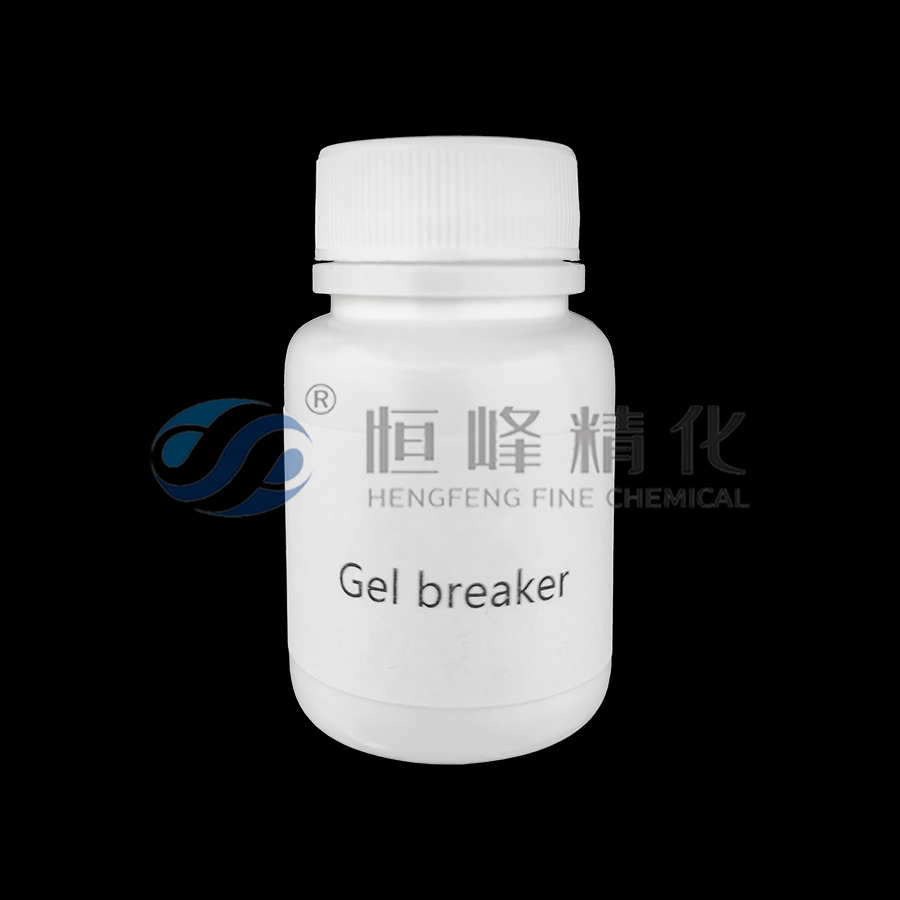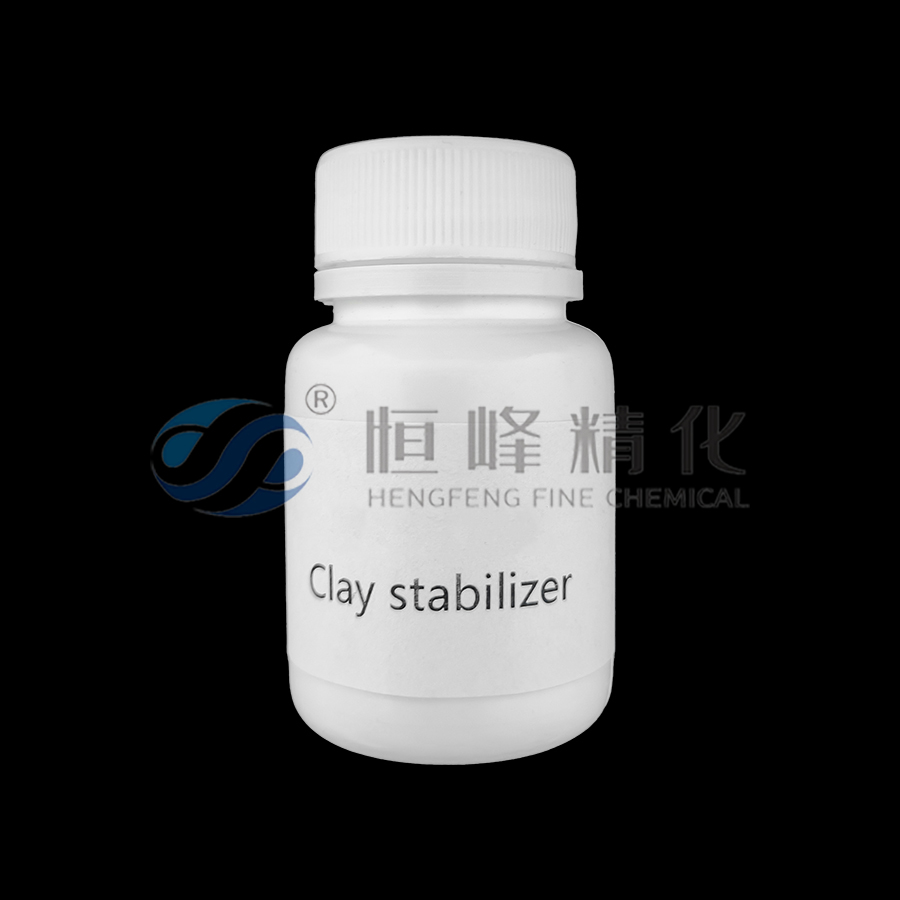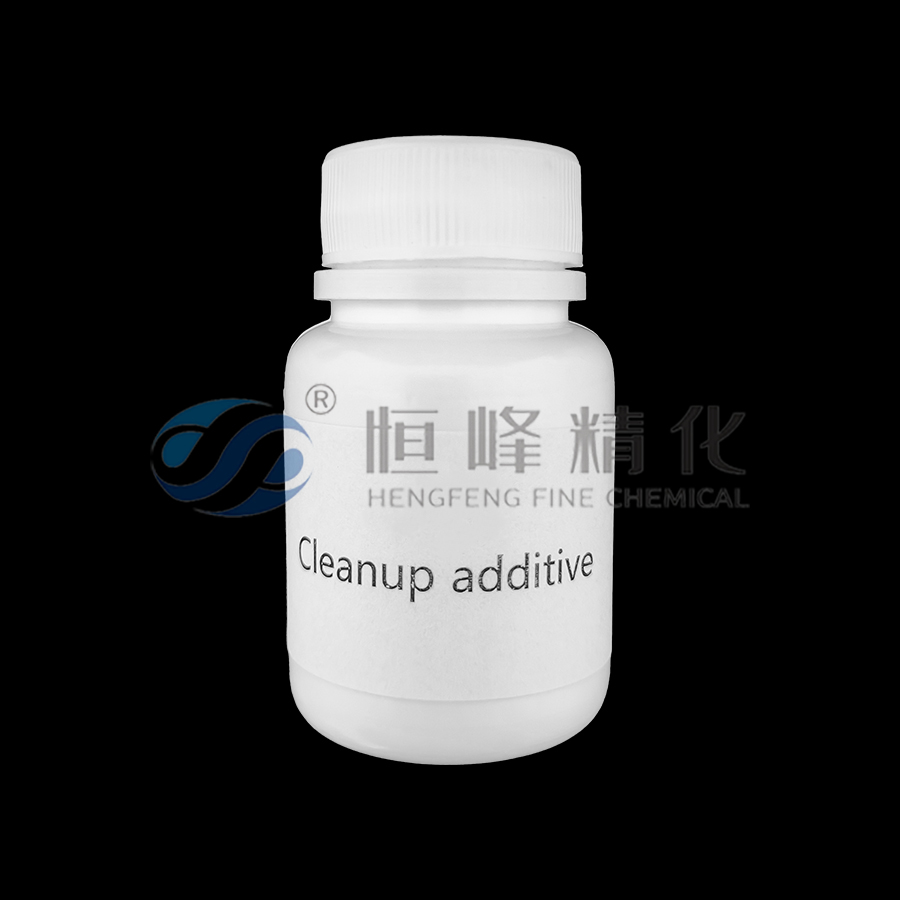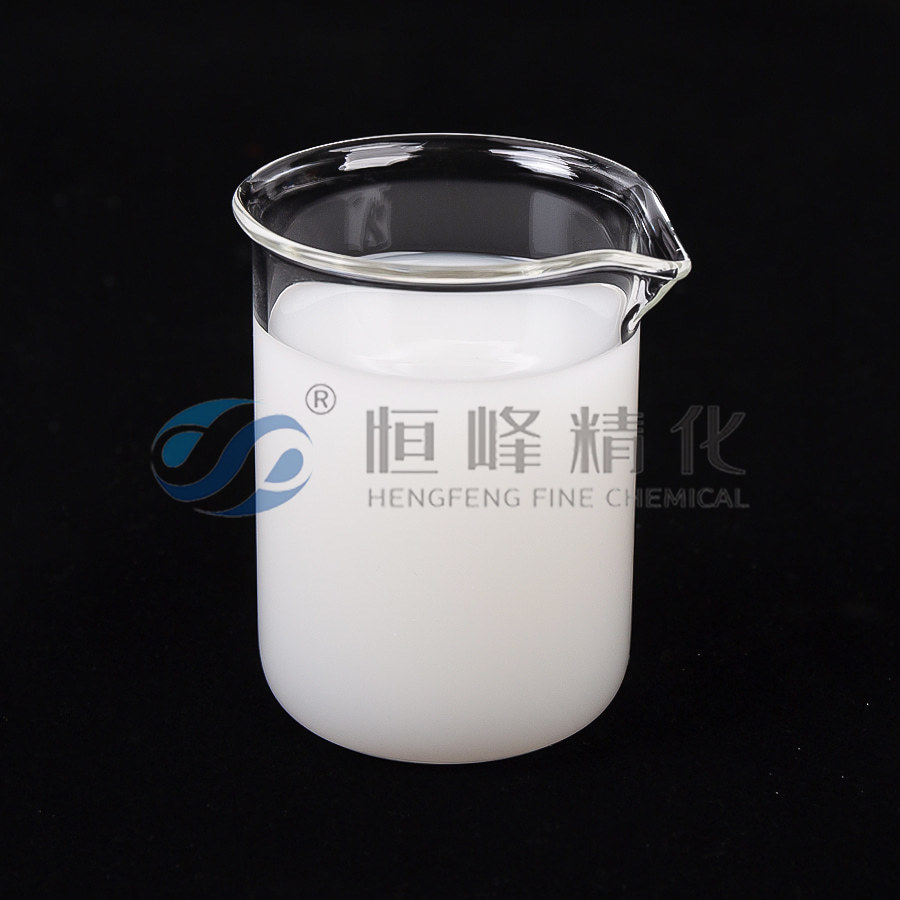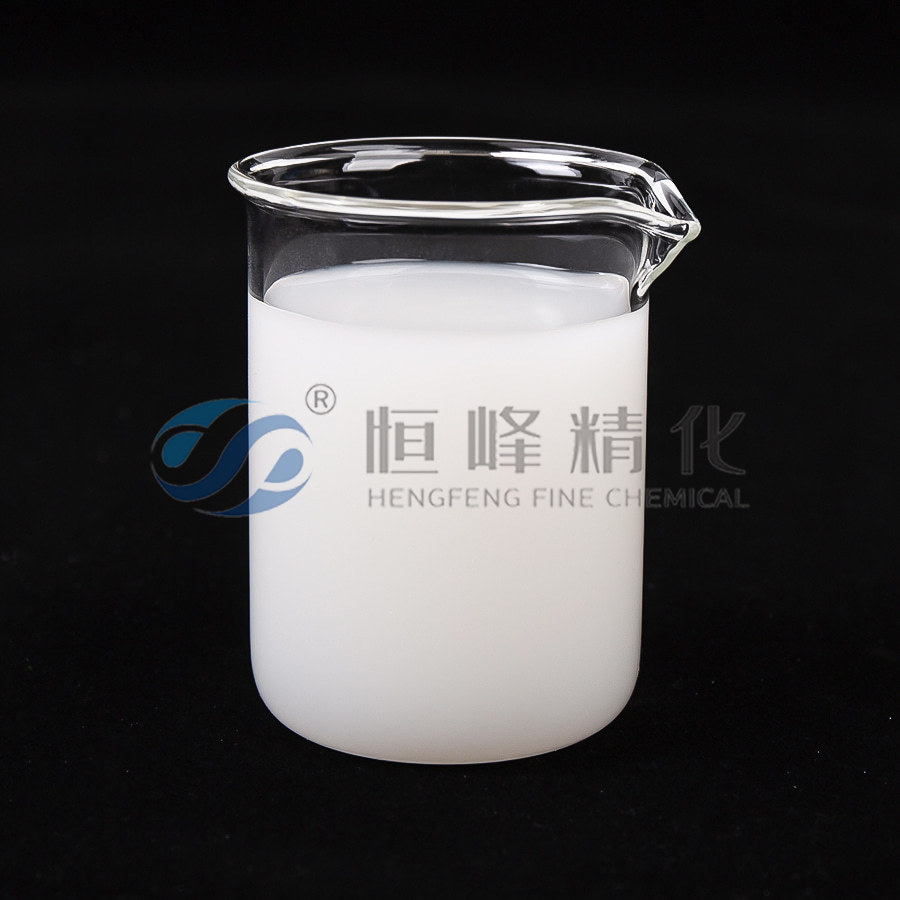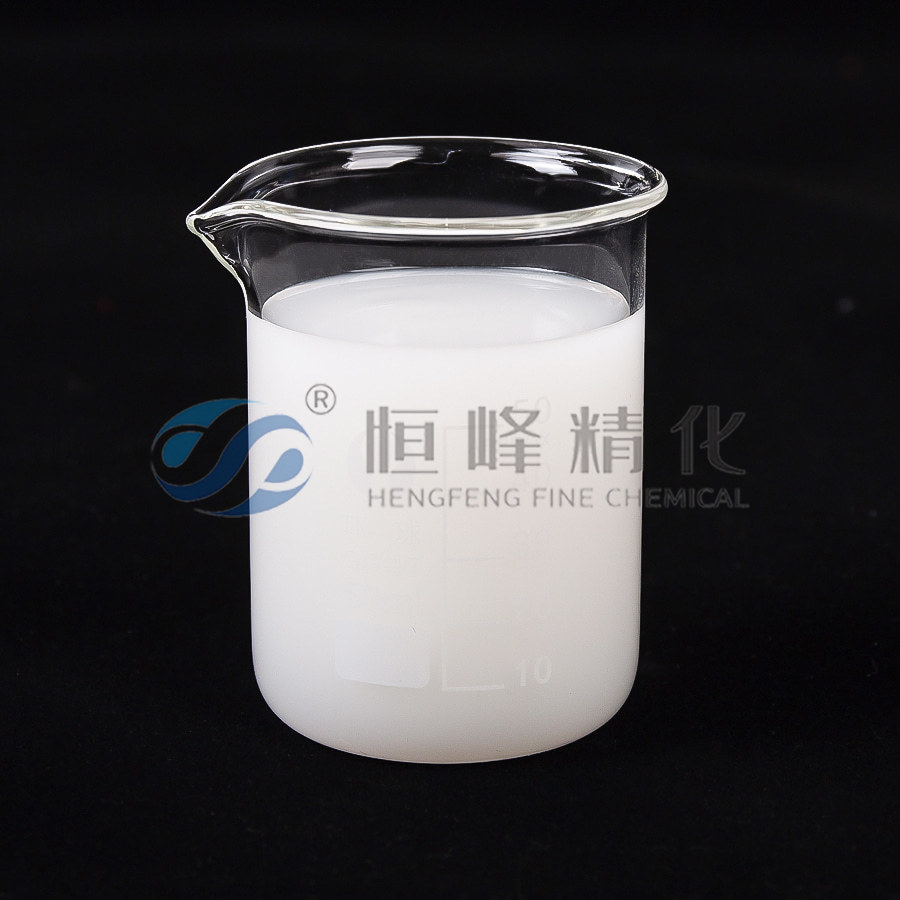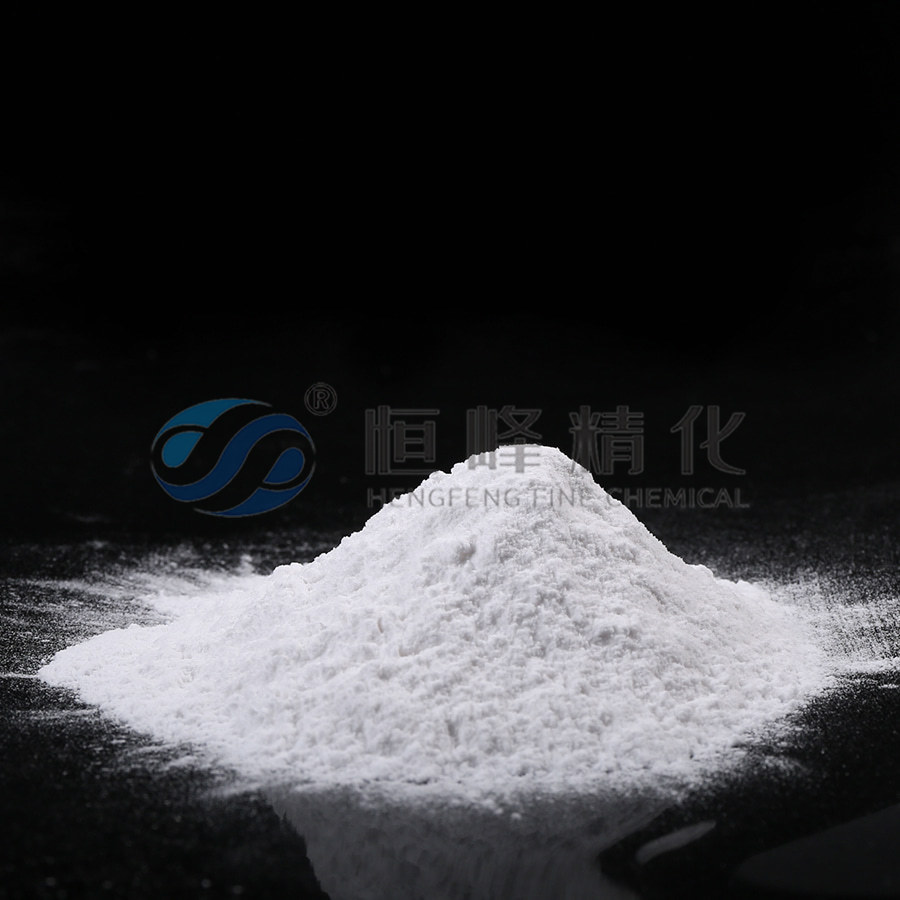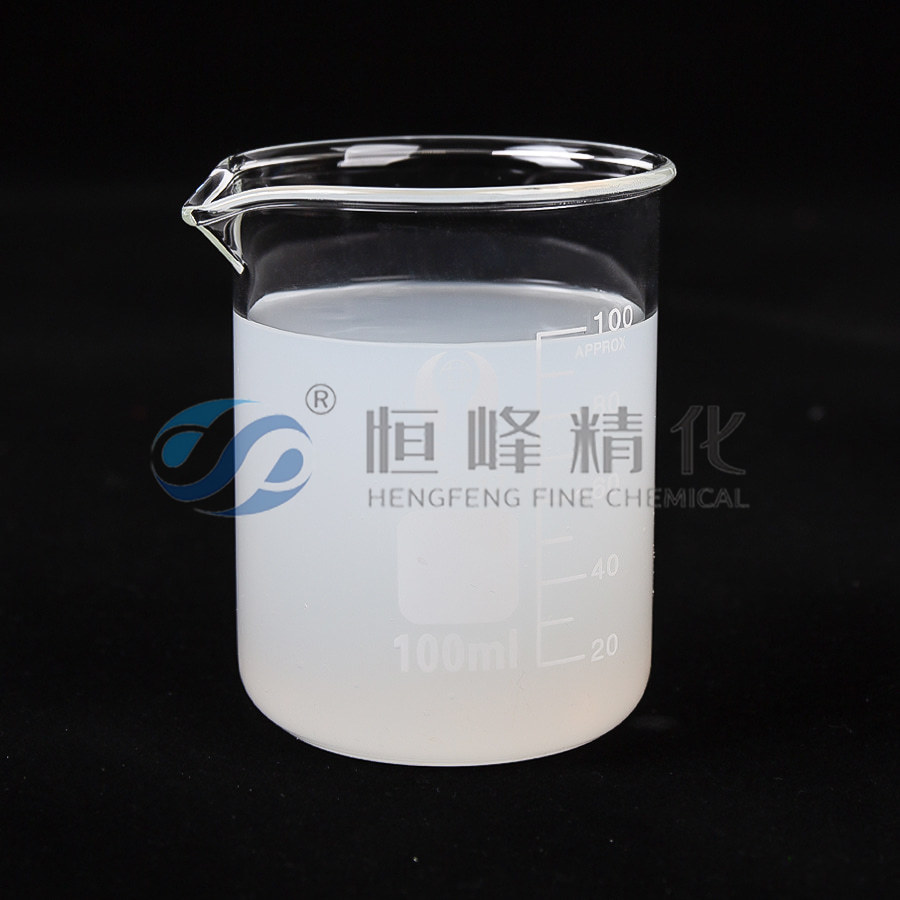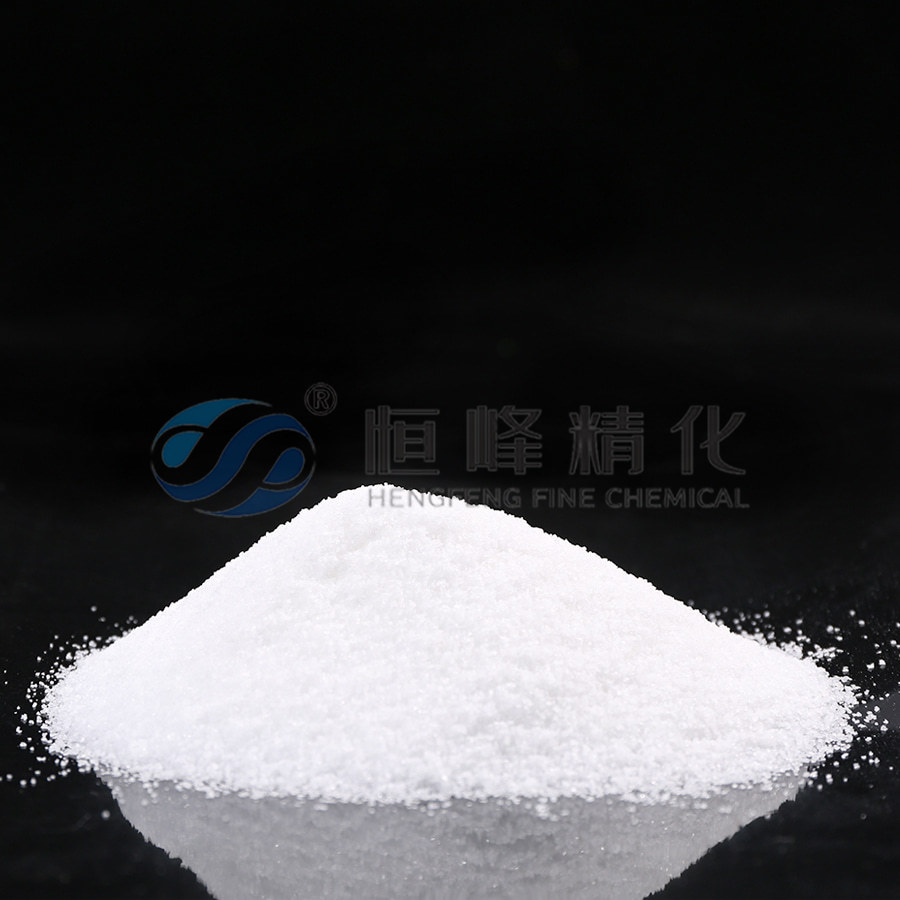Fracturing Fluid Chemical: Integrated Emulsion For Reducing Resistance And Carrying Sand
What is Fracturing Fluid Chemical?
Fracturing fluid chemicals are specialized mixtures used in the hydraulic fracturing process, commonly known as "fracking." This process is crucial in the oil and gas industry, especially when accessing reserves of oil or natural gas that are trapped in shale or other dense rock formations. Hydraulic fracturing enables companies to increase the flow of hydrocarbons from these reservoirs, significantly boosting production. The role of fracturing fluids in this complex process cannot be overstated, as they ensure the efficient extraction of energy resources from the earth.
Definition and Importance of Hydraulic Fracturing in the Oil and Gas Industry
Hydraulic fracturing, or fracking, is a method employed to release oil or natural gas from deep underground reservoirs. The process involves injecting a high-pressure fluid mixture into the rock layers, causing fractures to form and allowing hydrocarbons to flow to the surface. Fracturing fluid serves several key functions in this process:
Creating and Propagating Fractures: The fluid is injected into the well at high pressures to crack the rock, which forms pathways for oil and gas to flow through.
Carrying Proppants: After the rock fractures, proppants (typically sand or synthetic materials) are carried by the fluid into the fractures. These proppants keep the fractures open once the pressure is reduced, ensuring continued flow of hydrocarbons.
Preventing Corrosion: The chemical additives in the fluid help protect the wellbore and equipment from corrosion caused by the aggressive conditions in deep wells.
Reducing Friction: The fluid's role in reducing friction is critical, as it enables smoother flow and reduces the wear and tear on pumps and other equipment during injection.
Hydraulic fracturing is essential for unlocking unconventional oil and gas resources, such as shale oil and gas, and is a cornerstone technology in modern energy extraction.
Role of Fracturing Fluid in the Process
Fracturing fluids play a pivotal role in the success of hydraulic fracturing operations. A typical fracturing fluid is made up of water, proppants, and a range of chemical additives. These fluids perform the following functions:
Carrying Proppants into the Fractures: As mentioned earlier, the fracturing fluid transports proppants into the fractures, which helps hold them open after the fracturing pressure is relieved. Without this function, the fractures would close, preventing further oil and gas production.
Maintaining Pressure: The fluid helps maintain the necessary pressure to propagate fractures in deep rock formations. The higher the pressure, the greater the depth of the fractures and the volume of oil or gas that can be extracted.
Lubricating the System: The fluid's chemical composition helps lubricate the pumping system, reducing wear and tear and ensuring that operations proceed smoothly over extended periods.
Preventing Scaling and Biofouling: Certain chemicals in the fluid help prevent the build-up of minerals (scaling) or bacterial growth (biofouling), both of which can impede fluid flow and damage equipment.
Reducing Fluid Loss: The fluid's ability to reduce leakage into surrounding formations is vital for efficient fracturing. Proper formulation ensures that the fluid remains effective at reaching the target fractures without significant loss to unintended zones.
What is Integrated Emulsion and Its Purpose in Fracturing Fluids?
An integrated emulsion is a specially formulated type of fracturing fluid that combines water and oil into a stable mixture. This emulsion helps optimize the overall performance of hydraulic fracturing fluids by providing a balance between the benefits of water-based and oil-based fluids.
Purpose of Integrated Emulsion in Fracturing Fluids:
Reducing Friction and Pressure Drop: Integrated emulsions reduce the friction encountered by the fluid as it travels through the wellbore and pipes. This reduction in friction leads to lower pressure losses, making the fracturing process more efficient and reducing the load on the pumping equipment.
Enhancing Proppant Transport: The emulsion helps carry proppants more effectively into the fractures. The unique structure of the emulsion stabilizes the proppants, preventing them from settling prematurely and ensuring they remain suspended for longer distances. This enhances the efficiency of the fracturing process.
Improving Stability in Extreme Conditions: Integrated emulsions are designed to perform in extreme high-pressure, high-temperature environments. The stability of the emulsion ensures that the fracturing fluid maintains its integrity and performance throughout the operation, even under harsh conditions.
Reducing Environmental Impact: Some integrated emulsions are designed with a focus on reducing environmental impact. These emulsions can be more biodegradable and less toxic than traditional oil-based fracturing fluids, aligning with industry efforts to make hydraulic fracturing more environmentally friendly.
Improving Wellbore Cleanliness: The integrated emulsion also helps clean the wellbore by removing debris and other particles that could block the flow of fluid or oil. This ensures that the fracturing process can proceed without unnecessary interruptions and that the well remains in optimal condition for future operations.
In essence, integrated emulsions provide a more efficient, stable, and environmentally-friendly alternative to traditional fracturing fluids. They combine the best properties of both water and oil, offering a solution that balances high performance with reduced environmental risks.
Composition of Fracturing Fluid Chemicals
Fracturing fluids are typically composed of several key components, each contributing to the overall effectiveness of the hydraulic fracturing process. These include water, chemicals, proppants, and emulsifiers.
1. Water-based Fracturing Fluids
Water-based fracturing fluids are the most common type of fracking fluid. Water serves as the primary medium, with various chemicals and additives mixed in to enhance its performance. The additives in water-based fluids include:
Friction reducers: These chemicals lower the friction between the fluid and the wellbore, allowing the fluid to be injected into the formation with less resistance. This reduction in friction makes the fracturing process more efficient and reduces the wear on pumps and other equipment.
Gelling agents: These are used to thicken the fluid, enabling it to carry proppants (sand or other materials) into the fractures more effectively. Gels provide the necessary viscosity to transport sand over long distances within the wellbore.
Acids: In some cases, small amounts of acids are used to dissolve minerals in the rock, helping to create more fractures and improve fluid flow.
2. Oil-based Fracturing Fluids
Oil-based fracturing fluids use oil or synthetic oils as the base fluid. These are typically used when water-based fluids are less effective, such as in highly saline or high-temperature environments. Oil-based fluids have the advantage of greater thermal stability, making them ideal for deep or hot wells. However, they can pose environmental and disposal challenges due to their higher toxicity compared to water-based fluids.
Solvents and surfactants: These chemicals are used in oil-based fluids to ensure that the fluid remains stable and does not separate into different components under the extreme conditions present in the wellbore.
3. Foam-based Fracturing Fluids
Foam-based fluids use a mixture of water, gas, and foaming agents to create a highly efficient, low-viscosity fluid. The foam is used to reduce the volume of water needed in fracking operations, making foam-based fluids more suitable for areas with limited water resources. The foam structure also helps in improving proppant transport and preventing water loss into surrounding formations. Foam-based fluids are particularly beneficial in shale and coalbed methane formations.
Foaming agents: These agents help create stable foam that can carry proppants while maintaining low viscosity for easier injection and reduced fluid loss.
Key Components of Fracturing Fluids
Fracturing fluids consist of various components that are mixed in specific proportions to achieve the desired performance in the wellbore. The key components include:
Water: The primary component in most fracturing fluids, water serves as the carrier for the chemicals and proppants. Its composition, such as its salinity and mineral content, can impact the overall performance of the fluid.
Chemicals: A variety of chemical additives are used in fracturing fluids to improve their properties. These chemicals include surfactants, gelling agents, corrosion inhibitors, friction reducers, and biocides. Each chemical is selected based on its ability to perform specific functions, such as reducing friction or controlling the growth of bacteria.
Proppants: Proppants, such as sand or ceramic beads, are added to fracturing fluids to keep the fractures open after the fracturing process. This is essential to allow the oil or gas to flow to the surface. Proppants need to be transported efficiently through the fractures without settling prematurely.
Emulsifiers: Emulsifiers are used to stabilize the mixture of water and oil or other liquids in an emulsion. This helps maintain a consistent and stable fluid mixture, ensuring that the fluid retains its desired properties throughout the fracking process.
Challenges in Fracturing Fluid Chemical Performance
While fracturing fluids are vital to the success of hydraulic fracturing, several challenges arise in their performance, particularly in deep and complex wells. These challenges include high friction, sand settling, and limited flow, all of which can hinder the efficiency and effectiveness of the fracturing operation.
1. High Friction
In deep and narrow wells, high friction can occur as the fracturing fluid is pumped at high pressure into the wellbore. This friction reduces the efficiency of the pumping system, requires more energy to inject the fluid, and can lead to excessive wear on equipment. To mitigate this, friction-reducing chemicals are added to the fluid, but the overall performance is still highly dependent on the fluid composition and the conditions inside the well.
2. Sand Settling
Proppants, such as sand, are essential for keeping fractures open. However, the suspended sand can sometimes settle within the fracturing fluid, especially when the fluid's viscosity is too low. This reduces the effectiveness of the fluid, as the proppants may not reach the target fractures or may settle prematurely. To address this challenge, specialized emulsions and gel systems are used to enhance the suspension of proppants, ensuring that they remain evenly distributed and can be carried to the fractures.
3. Limited Flow in Complex Wells
In deep and complex wells, the fluid must be able to flow efficiently over long distances and navigate through narrow fractures. The fluid's rheological properties (its ability to flow and change shape) are critical in ensuring efficient transport. If the fluid cannot flow smoothly, the hydraulic fracturing process can become less effective, leading to lower oil and gas recovery rates.
4. Need for Enhanced Performance in Deep and Complex Wells
The demand for enhanced performance in complex wells has grown with the exploration of deeper and more challenging formations. These wells require fracturing fluids that can withstand extreme temperatures, high pressures, and harsh chemical environments. The composition of the fluid must be carefully tailored to address these conditions, often requiring advanced chemical formulations and the use of specialized additives to maintain the fluid's effectiveness over extended periods.
The Role of Integrated Emulsion in Fracturing Fluid Chemicals
Integrated emulsions have revolutionized the field of hydraulic fracturing by providing a highly effective solution to some of the most challenging issues faced during fracturing operations. As the oil and gas industry continues to explore deeper, more complex wells, the need for advanced fracturing fluid formulations has grown. Integrated emulsions play a vital role in enhancing fluid performance by reducing friction, improving sand transport, and providing better fluid stability under extreme conditions. In this article, we will delve into the definition, chemical composition, and benefits of integrated emulsions, with a focus on their ability to reduce flow resistance and enhance sand carrying capacity during hydraulic fracturing.
Definition and Characteristics of Integrated Emulsion
An integrated emulsion is a specialized fluid used in hydraulic fracturing, composed of a stable mixture of water and oil or other organic components. Unlike traditional fracturing fluids, which may only rely on water or oil as the base, integrated emulsions combine the benefits of both water-based and oil-based fluids to achieve superior performance.
The emulsion is stabilized through the use of emulsifiers, which enable the water and oil phases to blend together without separating. This chemical combination provides unique properties, making integrated emulsions highly suitable for challenging well conditions. The key characteristics of integrated emulsions include:
Stable Viscosity: The viscosity of integrated emulsions is tailored to maintain efficient proppant transport and fracture creation while being easy to pump under high pressure.
Enhanced Thermal Stability: Integrated emulsions offer excellent thermal stability, making them ideal for deep wells with extreme temperatures.
Reduced Environmental Impact: Some integrated emulsions are formulated with eco-friendly components, ensuring that the fluids meet environmental standards while still delivering optimal performance.
Chemical Composition and How It Works Within the Fracturing Fluid
The chemical composition of integrated emulsions typically consists of:
Water Phase: The water component of the emulsion is often mixed with various chemicals such as friction reducers, stabilizers, and gelling agents. This helps to enhance the fluid's viscosity, enabling better proppant transport and minimizing fluid loss to surrounding formations.
Oil Phase: The oil component, which could be either petroleum-based or synthetic, helps in reducing friction and improving the fluid's ability to carry proppants. It also enhances the emulsion's ability to withstand high temperatures and pressure.
Emulsifiers: These are chemicals responsible for stabilizing the water-oil mixture, ensuring that the two phases do not separate under the high shear and turbulent conditions typically found in the wellbore. Emulsifiers are crucial for maintaining fluid stability and performance.
The combination of these components creates a fluid that not only reduces friction and pressure drop but also provides better proppant suspension and enhanced wellbore stability.
Benefits Over Traditional Fracturing Fluid Chemical Formulations
Integrated emulsions offer several distinct advantages over traditional fracturing fluid formulations, such as water-based or oil-based fluids. These benefits make them particularly attractive for modern hydraulic fracturing operations:
1. Reduced Flow Resistance
Integrated emulsions significantly reduce the resistance encountered by fracturing fluids as they travel through the wellbore. Traditional water-based fracturing fluids often encounter high frictional forces, particularly in deep wells or when using small-diameter pipes. This increased resistance can reduce the efficiency of the operation and result in higher pumping costs.
In contrast, integrated emulsions are formulated with friction reducers that lower the overall resistance to fluid flow. By reducing friction, the fluid can be pumped with less energy, lowering operational costs and improving the efficiency of the fracturing process. The fluid's ability to maintain low friction over long distances makes it ideal for deep or horizontal wells.
2. Improved Sand Carrying Capacity
The ability of a fracturing fluid to carry proppants, like sand, into fractures is crucial for maintaining the open fractures once the pressure is reduced. Traditional fluids may struggle to keep proppants suspended over long distances, leading to uneven proppant placement and, ultimately, reduced well productivity.
Integrated emulsions offer superior sand-carrying capacity due to their unique viscosity profile. The oil component in the emulsion helps maintain the stability of the proppants, preventing them from settling prematurely while ensuring they remain evenly distributed throughout the fluid. This ensures that the proppants are effectively carried into the fractures and that the fractures stay open, facilitating the continued flow of hydrocarbons to the surface.
Reducing Flow Resistance
How Integrated Emulsion Reduces Friction in the System
The reduction of friction is one of the most critical benefits of integrated emulsions in hydraulic fracturing fluids. The emulsifier's properties help create a smooth, stable mixture that reduces the resistance to flow within the wellbore. When compared to traditional water-based fluids, integrated emulsions significantly lower the frictional forces encountered during the injection process. This results in:
Improved Pumping Efficiency: Lower friction allows for smoother fluid transport, reducing the power required to pump the fluid into the formation.
Reduced Wear and Tear on Equipment: By minimizing friction, integrated emulsions help prevent excessive wear on the pumps, valves, and other equipment, extending their lifespan and reducing maintenance costs.
Benefits of Lower Friction for Long-Distance Fluid Transport
Long-distance fluid transport, especially in horizontal or deep wells, can be challenging due to the increased friction along the wellbore. The ability of integrated emulsions to maintain low friction makes them ideal for these applications. By lowering the energy required for pumping, they:
Allow for Deeper and Longer Fracturing Jobs: Integrated emulsions help reduce the pressure drop over long distances, making them effective in deeper and more complex wells, where traditional fluids would require higher pressure to reach the target formation.
Minimize Energy Costs: The reduction in friction translates directly into energy savings, as less power is needed to inject the fluid, making the entire fracturing process more cost-effective.
Enhancing Sand Carrying Capacity
How Integrated Emulsion Maintains the Stability of Proppants (Sand)
One of the primary functions of fracturing fluid is to transport proppants into the fractures created in the formation. Integrated emulsions help maintain the stability of these proppants by preventing them from settling in the fluid during transport.
The emulsion's viscosity ensures that proppants remain suspended in the fluid over longer distances, preventing the particles from settling and clogging the equipment. This is especially important in longer horizontal wells, where proppants must be carried over large distances before reaching the fracture sites.
The Role of Emulsion in Preventing Sand Settling During Transport
Sand settling is a common challenge in hydraulic fracturing, especially in highly viscous water-based fluids. In traditional systems, sand can settle quickly, reducing the effectiveness of the fracturing process. Integrated emulsions are designed to prevent this issue by:
Providing Suspension Stability: The oil-water mixture creates a stable environment for the proppants, preventing them from separating from the fluid. This ensures that the proppants remain evenly distributed, reaching all areas of the fracture network.
Minimizing Fluid Loss: By maintaining proppant suspension, integrated emulsions reduce the chances of fluid loss into the surrounding rock, ensuring that more of the fluid reaches the intended fractures.
Mechanisms of Action: How Integrated Emulsion Works in Fracturing Fluids
Chemical Interactions in the Emulsion
At the core of integrated emulsions are emulsifiers and stabilizers, which play key roles in ensuring the fluid remains stable throughout the fracturing process. These chemicals allow the water and oil phases to mix and form a stable, homogeneous fluid. Without these stabilizers, the water and oil would naturally separate, undermining the fluid's effectiveness. Here's how they work:
1. Emulsifiers in Action
Emulsifiers are surfactants or chemical agents that lower the surface tension between the water and oil phases, making it easier for them to mix. They are designed to be compatible with both the water and oil components, creating a stable mixture that doesn’t separate under high shear or turbulent conditions within the wellbore. The emulsifiers create a uniform, stable emulsion by forming micelles or structures that surround the oil droplets, keeping them suspended in the water phase.
Role of Emulsifiers: Emulsifiers create a barrier that keeps the oil droplets dispersed within the water phase, preventing separation. This ensures that the fluid maintains its consistency and performance characteristics throughout the fracturing process, even in challenging environments.
2. Stabilizers in Action
Stabilizers, often added in combination with emulsifiers, help maintain the integrity of the emulsion over time. These chemicals enhance the emulsion's resistance to external factors like temperature fluctuations, pressure changes, and the presence of contaminants such as minerals and salts. Stabilizers also contribute to the viscosity and rheological properties of the fluid, making it more effective at transporting proppants and reducing friction.
Role of Stabilizers: Stabilizers improve the emulsion's resistance to separation under extreme well conditions. They ensure that the emulsion remains stable and effective, providing consistent fluid performance and reliable proppant transport.
Effect on Viscosity and Flow Properties
One of the key characteristics of integrated emulsions is their ability to adjust viscosity to suit the specific needs of a hydraulic fracturing operation. Viscosity plays a vital role in the overall performance of the fracturing fluid, affecting everything from flow rate to proppant suspension.
Viscosity Control
The viscosity of integrated emulsions is tailored to achieve the perfect balance between flow and transport efficiency. It is thick enough to carry proppants like sand but still fluid enough to be easily injected into the wellbore under high pressure. The chemical composition of emulsions allows for this fine-tuning of viscosity, providing several advantages over traditional fracturing fluids:
Improved Proppant Transport: A higher viscosity allows the emulsion to carry proppants more effectively, preventing them from settling prematurely during transport.
Reduced Friction: By adjusting the viscosity, emulsions reduce the frictional forces that arise during fluid injection, enhancing pumping efficiency and lowering operational costs.
Flow Properties
The flow properties of integrated emulsions determine how easily the fluid moves through the wellbore and fractures. Integrated emulsions are formulated to maintain laminar flow, which minimizes turbulence and the pressure losses typically seen with highly viscous fluids. The emulsifiers and stabilizers help ensure that the fluid flows smoothly through the pipeline, even over long distances or in narrow fractures.
Flowability: The fluid's ability to flow smoothly allows it to be injected into deeper wells or through long horizontal sections with minimal resistance.
Pressure Dynamics: The fluid's low friction properties reduce the pressure required to inject the fluid, making the process more efficient and less energy-intensive.
Flow Characteristics and Rheology
The rheological properties of integrated emulsions are critical for their performance in hydraulic fracturing. Rheology refers to the flow behavior of the fluid and how it responds to changes in pressure and shear. Understanding the rheology of fracturing fluids with integrated emulsions is essential for predicting their performance under various operating conditions.
1. Understanding the Rheological Properties
Rheological properties of integrated emulsions are designed to allow the fluid to behave in a specific way under different pressures and shear rates. For instance, when the fluid is subjected to high shear during injection, it may experience changes in viscosity. Integrated emulsions are engineered to maintain stability and viscosity under shear stress, ensuring consistent performance during the injection process.
Shear-thinning Behavior: Integrated emulsions typically exhibit shear-thinning behavior, meaning their viscosity decreases as the shear rate increases (such as when pumped through narrow fractures). This allows for easier injection under high-pressure conditions, while still maintaining sufficient viscosity for proppant transport.
Viscosity Recovery: After the shear stress is reduced (e.g., when the fluid reaches the fractures), the emulsion recovers its viscosity, ensuring that proppants remain suspended and fractures stay open.
2. Impact of Viscosity on Flow and Pressure Dynamics
Viscosity directly impacts both the flow of the fracturing fluid and the pressure dynamics within the wellbore. Low viscosity fluids may flow too quickly and fail to transport proppants effectively, while high viscosity fluids may require excessive pressure to inject, raising operational costs. Integrated emulsions strike the ideal balance by providing the right viscosity for optimal flow and pressure management.
Optimal Flow and Pressure: The emulsion's controlled viscosity reduces the friction and pressure drop along the wellbore, improving the efficiency of fluid injection and reducing the risk of equipment failure.
Proppant Suspension and Transport: A carefully controlled viscosity ensures that proppants remain suspended throughout the transport process, preventing them from settling and ensuring they are delivered to the fractures effectively.
Emulsion Stability in High-Pressure Environments
Hydraulic fracturing often occurs at extreme depths, where temperature and pressure conditions can fluctuate widely. For a fracturing fluid to be effective, it must remain stable under these high-pressure and high-temperature environments. Integrated emulsions are specially designed to withstand these harsh conditions, ensuring their continued performance even in challenging well environments.
Performance at Various Temperatures and Pressures
Integrated emulsions offer excellent thermal stability and can maintain their performance at a wide range of temperatures. Their ability to withstand high temperatures is especially important in deep wells, where the temperature can reach extreme levels. The emulsifiers and stabilizers used in these fluids are engineered to function effectively under these harsh conditions, preventing the emulsion from breaking down or separating.
High-Pressure Performance: Integrated emulsions are able to withstand the high pressures typically found in deep wells without losing their emulsion integrity. This ensures that the fluid continues to perform effectively, helping to create fractures and transport proppants even under high-stress conditions.
Temperature Stability: The high thermal stability of integrated emulsions ensures that the fluid maintains its desired properties even in hot environments, preventing the emulsion from breaking down or separating due to elevated temperatures.
Advantages of Using Integrated Emulsion in Fracturing Fluid Chemicals
Reduced Friction and Pressure Drop
One of the most notable advantages of integrated emulsions is their ability to significantly reduce friction and pressure drop during hydraulic fracturing operations. Friction and pressure losses are common challenges in traditional water-based fracturing fluids, especially in deep or horizontal wells where the fluid must travel long distances under high pressure.
How Reducing Friction Enhances Pump Efficiency and Reduces Operational Costs
The reduced friction in integrated emulsions plays a pivotal role in optimizing the fluid injection process. By lowering the resistance to flow within the wellbore, these emulsions allow the fluid to be pumped more efficiently, reducing the amount of energy required to inject it into the formation.
Pump Efficiency: With lower friction, pumps experience less wear and tear, leading to fewer breakdowns and reduced maintenance costs. This also helps extend the lifespan of pumping equipment, improving the overall cost-effectiveness of the operation.
Operational Costs: Reducing friction means that operators can use less power to inject the fluid, lowering energy consumption. This not only cuts costs but also reduces the overall environmental footprint of the operation.
The ability to maintain low pressure losses across long distances makes integrated emulsions ideal for challenging fracturing jobs in deeper or more complex wells, where friction can significantly hinder the operation.
Improved Proppant Transport
Effective proppant transport is crucial for the success of hydraulic fracturing. Proppants, such as sand or ceramic materials, are carried by the fracturing fluid to keep the fractures open and allow for continued flow of hydrocarbons. Integrated emulsions offer significant improvements in this area.
Ensuring Uniform Distribution of Proppants and Preventing Clogging
The enhanced viscosity and stable structure of integrated emulsions help prevent proppants from settling prematurely, ensuring that they remain suspended and evenly distributed throughout the fracturing fluid. This is crucial in ensuring that the proppants are delivered effectively into the fractures, creating a network of open pathways for oil and gas to flow.
Uniform Distribution: By maintaining the suspension of proppants over long distances, integrated emulsions ensure that fractures remain evenly propped open, maximizing production potential.
Prevention of Clogging: The stable nature of the emulsion prevents proppants from clustering together or settling within the wellbore, which could otherwise lead to clogging and blockages in the equipment and fractures.
Incorporating integrated emulsions into the fracturing process ensures that the fluid delivers proppants to the right location at the right time, improving the overall effectiveness of the fracture and enhancing hydrocarbon recovery.
Increased Operational Efficiency
Integrated emulsions not only improve individual aspects of the fracturing process but also enhance the overall operational efficiency of hydraulic fracturing projects.
Streamlined Injection Process, Faster Fracturing Times, and Better Resource Utilization
By reducing friction, improving proppant transport, and ensuring stable flow, integrated emulsions streamline the injection process. This results in:
Faster Fracturing Times: The fluid's low viscosity, combined with its ability to maintain a stable flow, reduces the time required to inject the fluid into the formation. This leads to quicker fracture creation and a faster overall fracturing process.
Better Resource Utilization: With reduced energy consumption and optimized fluid flow, the resources (such as water, chemicals, and energy) used during the fracturing process are more efficiently utilized. This can result in cost savings and a higher return on investment for the operator.
The enhanced performance of integrated emulsions allows for better planning and execution of hydraulic fracturing operations, ensuring that resources are used efficiently while minimizing downtime and operational delays.
Environmental Benefits
With the increasing focus on environmental sustainability in the oil and gas industry, integrated emulsions offer several advantages that contribute to greener operations.
Potential Reduction in Water Usage and Chemical Additives
Integrated emulsions are formulated to use less water compared to traditional water-based fracturing fluids. This is especially beneficial in regions where water resources are limited, or in areas where environmental concerns related to water usage are more stringent.
Reduction in Water Consumption: By utilizing oil-based components in the emulsion, the overall water usage is reduced, helping to conserve valuable water resources.
Lower Chemical Additives: Emulsions also allow for the reduction of chemical additives required in the fracturing process. This not only reduces the overall chemical load but also minimizes the potential for harmful environmental impacts related to chemical runoff and contamination.
Increased Sustainability and Reduced Environmental Impact
In addition to reducing water and chemical usage, integrated emulsions are designed to be more biodegradable and environmentally friendly than traditional oil-based fluids. This aligns with industry efforts to reduce the ecological footprint of hydraulic fracturing operations.
Biodegradability: Many integrated emulsions are designed with environmentally friendly chemicals that break down more quickly than traditional oil-based fluids, reducing the long-term impact on soil and water quality.
Lower Toxicity: Integrated emulsions often use less toxic chemicals compared to traditional fluids, further contributing to a cleaner and safer environment.
By incorporating these environmentally conscious formulations, operators can contribute to the sustainability of their operations while complying with environmental regulations and minimizing their impact on local ecosystems.
| Advantage | Explanation |
|---|---|
| Reduced Friction and Pressure Drop | - Reduces resistance to flow within the wellbore, making fluid easier to pump. |
| - Enhances pump efficiency, reduces wear and tear, and lowers energy consumption. | |
| - Results in reduced operational costs and improved fluid injection. | |
| Improved Proppant Transport | - Ensures uniform distribution of proppants (e.g., sand or ceramic) throughout the fracturing fluid. |
| - Prevents proppants from settling prematurely, ensuring effective fracture propagation. | |
| - Enhances proppant suspension and transportation to the target fractures. | |
| Increased Operational Efficiency | - Streamlines the fluid injection process, speeding up fracturing times and reducing operational delays. |
| - Optimizes resource utilization, including water, chemicals, and energy, leading to cost savings. | |
| Environmental Benefits | - Reduces water usage by using less water in the formulation. |
| - Lower chemical additive requirements, reducing the overall chemical footprint. | |
| - More eco-friendly and biodegradable formulations, reducing environmental impact. | |
| Increased Sustainability | - More sustainable due to reduced water and chemical use, promoting greener operations. |
| - Contributes to a lower environmental footprint in terms of toxicity and waste management. |
Future Outlook for Integrated Emulsion in Fracturing Fluid Chemicals
The future of integrated emulsions in hydraulic fracturing looks promising, with several key trends indicating their increasing adoption and innovation across the industry.
Discussion on the Potential for Further Innovation and Adoption Across the Industry
As the oil and gas industry continues to evolve, the demand for more efficient, cost-effective, and environmentally friendly solutions will continue to drive innovation in fracturing fluid technologies. Integrated emulsions are expected to see further advancements, particularly in the areas of:
Enhanced Performance: Future developments may focus on improving the performance of integrated emulsions under extreme conditions, such as ultra-deep wells or highly reactive formations.
Greener Formulations: With a growing emphasis on sustainability, the development of more eco-friendly and biodegradable emulsions will become a key area of research and innovation.
Smart Fluids: The integration of smart technologies, such as sensors and real-time monitoring, could lead to the development of adaptive emulsions that respond dynamically to changes in well conditions, optimizing performance and improving operational efficiency.
Integrated emulsions have already made a significant impact on the hydraulic fracturing industry by providing solutions to key challenges such as friction, proppant transport, and environmental concerns. Their ability to reduce operational costs, improve well productivity, and reduce environmental impact positions them as a critical component of future fracturing technologies.
As the industry continues to push for safer, more efficient, and sustainable operations, integrated emulsions will play an increasingly important role. With their numerous benefits, these fluids are not just a technological improvement—they represent the future of hydraulic fracturing, where efficiency, cost-effectiveness, and environmental responsibility go hand in hand.


 English
English Español
Español عربى
عربى Русский
Русский Tiếng Việt
Tiếng Việt




